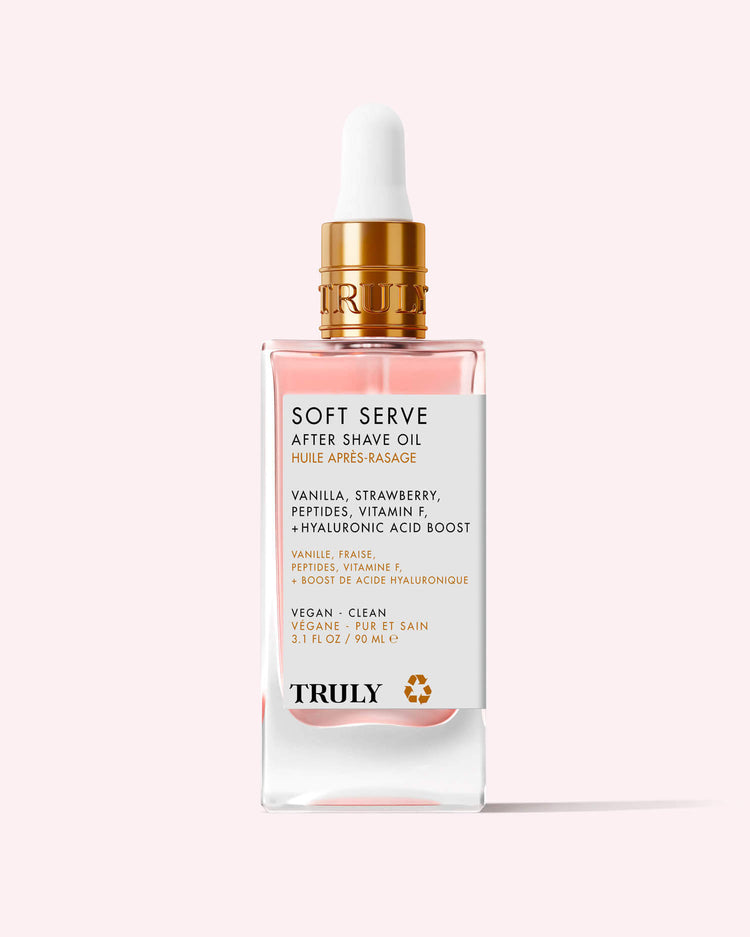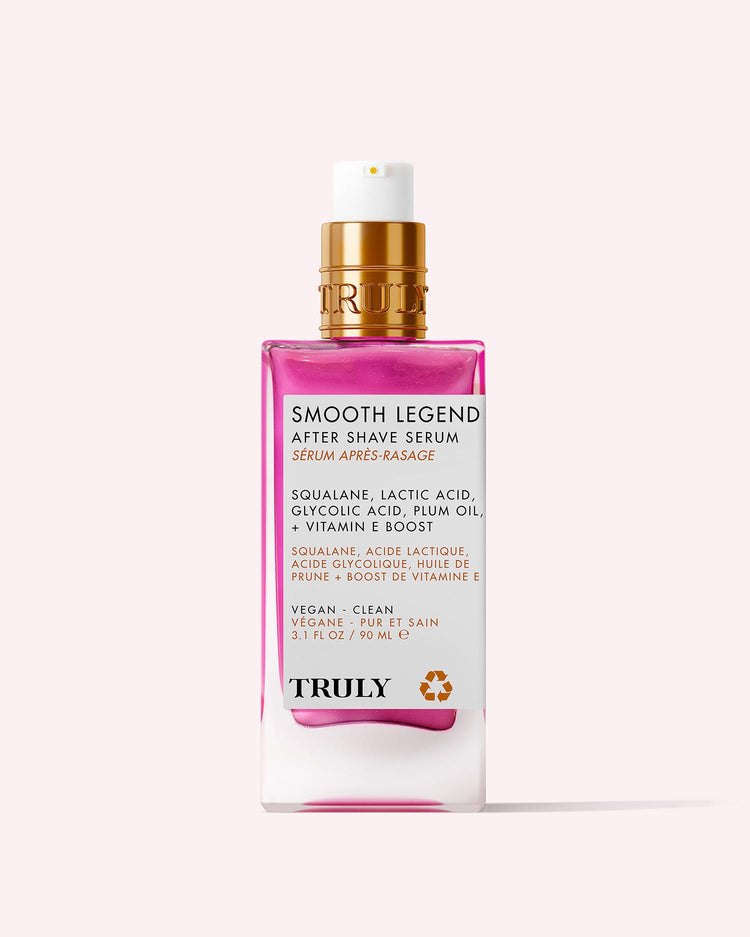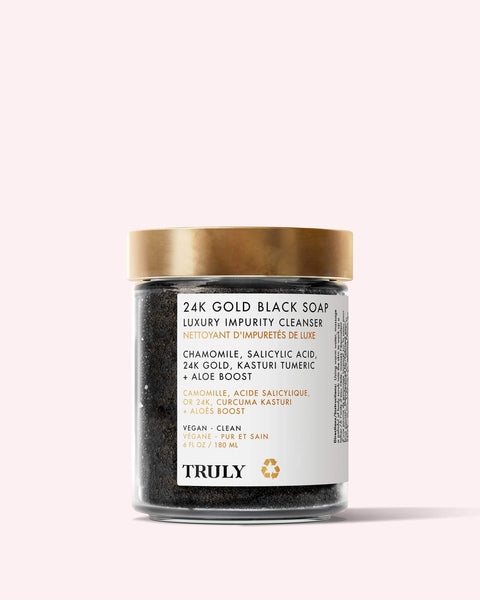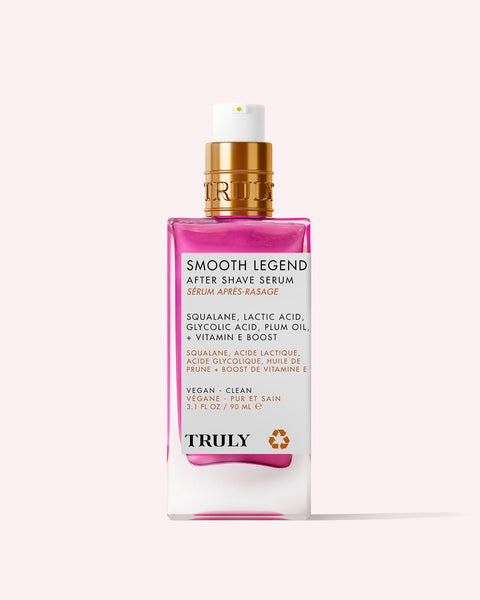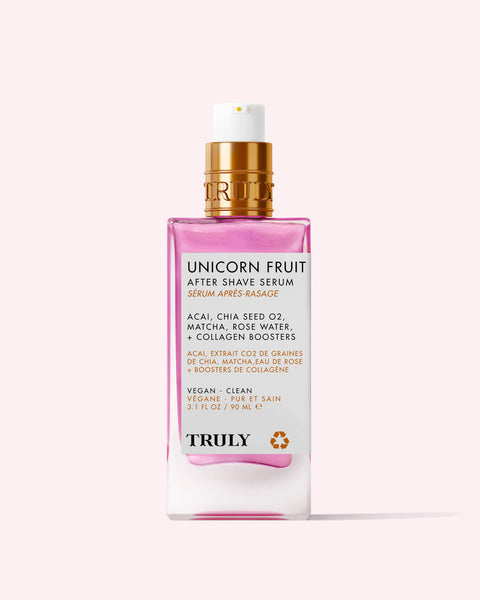How to Get Rid of Forehead Acne Fast

We've gathered all the intel on how to get rid of forehead acne fast so you can get clear and smooth asap.
Forehead acne is pretty common and luckily, nothing to worry about. That being said, it can be extremely frustrating, especially if you're already following a rigid skincare regimen.
Here's everything you need to know about how to get rid of acne on forehead including the best treatments to get clear.
How to Get Rid of Forehead Acne
Wondering, how can I clear my forehead acne? We've got answers (and some fantastic zit-zapping products) for you.
1. Exfoliate with Salicylic Acid
Clogged pores contribute to forehead acne. The first step to treating forehead breakouts is using a salicylic acid-based cleanser or exfoliator to remove dead skin cells and unclog pores.
Salicylic acid is one of the best acne-fighting ingredients out there. It cuts through excess sebum and sloughs away dead skin cells to clear blackheads, whiteheads, and breakouts on forehead.
Clear forehead acne with Truly's 24K Gold Black Soap Cleanser. It's formulated with salicylic acid, charcoal, and African black soap to fight bacteria and blemishes while absorbing excess oil for a visibly clearer complexion.
2. Reach for Retinol
Retinol isn't just for anti-aging. You can use it to get rid of forehead acne too. Or acne anywhere for that matter.
Retinol works by speeding up and encouraging healthy skin cell turnover. This means: you don't get a buildup of excess dead cells which can clog pores and lead to blemishes.
What's more, retinol can be great for treating any dark spots or discoloration associated with acne. In addition to its cell regeneration powers, it promotes collagen production, which helps the skin repair, giving it a smoother, clearer appearance.
How to get rid of forehead acne quickly? Reach for Truly's Vegan Collagen Cleanser which combines retinol with vitamin C and jojoba oil. Together, these work to clear acne on forehead, brighten skin, and balance oil production to prevent future blemishes.
3. Moisturize Your Forehead
The easiest way to tell your body to stop producing more oil is to apply oil – or any kind of moisturizing product for that matter.
By keeping your skin hydrated, you’re signaling to your skin that it has adequate oils, preventing it from producing more. When your skin is dehydrated, the body creates more oil to make up for the loss, often resulting in forehead pimples.
Control and prevent forehead acne with Truly's Glazed Donut Skin Set. It features a face cream and face serum that intensely hydrates without leaving your skin greasy.
4. Patch 'Em Up
If you've just got a few pimples on forehead, try using pimple patches to spot treat your zits. Acne patches extract dirt and oil from your blemish, speeding up the healing process while preventing marks and scars.
Stop forehead acne with Truly's #Heart Your Imperfections Blemish Patches. These hydrocolloid-based stickers are pink, heart-shaped, and adorable with epic healing power.
5. Change Your Pillowcase to Prevent Bacteria Transfer
Think about it. Your face touches your pillowcase every night for several hours each night. That’s a lot of contact! Now think about when you last changed your pillowcases… did you just say a month ago or worse, “I can’t remember.”?
That’s all the evidence we need to tell you to change your pillowcase right away.
“The bacteria and oils from our hair and mouth transfer onto our pillowcases and then our faces during the night — becoming another source of acne,” says Dr Rachel Nazarian.
Keep your pillowcase clean by changing them at least twice weekly. It might not be the only solution for how to get rid of forehead acne, but it can definitely help.
5. Re-Think What You’re Putting in Your Hair
How to get rid of forehead acne? Rethink what you're putting in your hair! And by that, we mean everything from your hair products to your hair accessories. Essentially anything oily or sticky that could be causing your breakouts.
Hair products like leave-in conditioners and pomades can sometimes worsen acne. If you use any of these products and you’re getting forehead breakouts, try taking a break from them to check if they’re really the culprits. The same goes for hair accessories like headbands and baseball caps.
6. Chill Out
Easier said than done – we know. But seriously, stress and acne go hand in hand.
In 2002, a study from Stanford University found that college students experienced acne flare-ups during exams – a highly stressful period in their lives – compared to times without exams. This proves that stress has a direct impact on acne.
Treat yourself to Truly's Signature VIP Collection. It's the ultimate pampering experience that'll help you relax, unwind, and feel your best.
What Causes Forehead Acne?
Before you find out how to get rid of forehead acne, it's a good idea to know the culprits. So what causes acne on forehead?
Forehead acne typically looks like red bumps known as papules. Sometimes, they appear with a collection of pus at the top. These are known as pustules.
There are many causes of forehead acne. Most likely what's causing yours is clogged pores – something that happens when dead skin cells and bacteria over-accumulate on your skin.
Stress, hormonal changes, and medication can all cause forehead acne. Alongside this, using irritating skincare products or not washing your face regularly can result in clogged pores and ultimately blemishes. Even heavy moisturizers can clog pores and lead to breakouts.
Then there's friction-related acne which can be caused by head accessories like hats and headbands. When these rub against your skin, it can result in tiny red bumps on your forehead.
Different Types of Forehead Acne
And the most common types of acne on forehead?
Milia
It’s not technically acne, but it looks a lot like it. And the majority of times, it takes shape on the forehead. Whereas acne forms as a result of excess oils and dead skin cells clogging pores, milia happens when keratin gets trapped under the surface of the skin.
Comedones
These small bumps are often known as blackheads and whiteheads.
“Acne comes in many flavors, and the type of acne you see depends on the person’s ability to produce oil,” says dermatologist Dr Purvisha Patel. “Usually the type seen on the forehead is caused by occluded pores, so more whiteheads are seen there.”
Papules
Forehead acne can also appear as raised red bumps – known as inflammatory papules. This type of acne is also common on the forehead.
“Other causes include inflammatory skin conditions such as rosacea and dermatitis and many possible small benign skin lesions such as milial cysts, sebaceous hyperplasia and seborrhoeic keratosis,” explains dermatologist Dr Clara McDonald.
How to Prevent Forehead Acne
Preventing forehead acne involves a combination of skincare habits and lifestyle adjustments. Here are some tips:
1. Keep your forehead clean: Wash your face twice a day with a gentle, non-comedogenic cleanser to remove excess oil, dirt, and sweat that could clog pores.
2. Avoid touching your face: Your hands can transfer bacteria, oil, and dirt to your skin, which may lead to breakouts. Try not to touch your forehead or face throughout the day.
3. Choose the right hair products: Oily or greasy hair products can contribute to forehead acne, so look for non-comedogenic (won't clog pores) shampoos and conditioners.
4. Exfoliate regularly: Exfoliating once or twice a week helps remove dead skin cells that can clog pores. Use a gentle exfoliant, like one with salicylic acid, which can target forehead acne directly.
5. Hydrate your skin: Keep your skin moisturized, even if you have oily skin. Look for oil-free, non-comedogenic moisturizers that won't clog pores.
6. Watch your diet: Certain foods, especially those high in sugar or dairy, may contribute to forehead acne. Consider reducing these in your diet and focus on a balanced one with plenty of fruits, vegetables, and healthy fats.
7. Manage stress: Stress can trigger hormone fluctuations that might cause acne on the forehead. Try stress-relieving activities like yoga, meditation, or simply getting enough sleep.
8. Use acne-fighting ingredients: Incorporate products that contain ingredients like salicylic acid, benzoyl peroxide, or niacinamide, which can help treat and prevent acne on head.
By following these steps and being consistent with your skincare routine, you should see fewer breakouts on your forehead.
How Long Does it Take for Forehead Acne to Go Away?
Generally speaking, if you're using the right treatments, it can take as little as 1-2 weeks before you notice your forehead acne clearing up. However, it can take up to six weeks.
Now you know how to get rid of forehead acne so you should only be a couple of weeks away from clearer skin.


